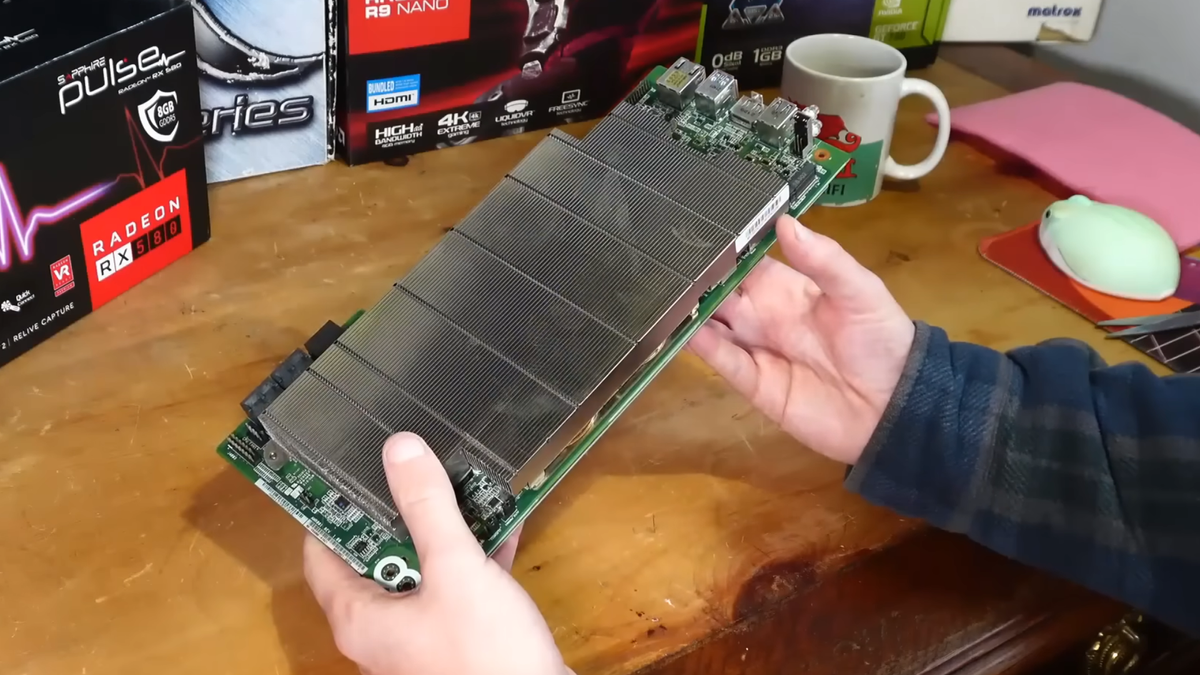
ZDNET's key takeaways
- The Light Phone 3 is available now with support from many major carriers for $599.
- It's setting a new standard for simplified phones by combining a sleek, minimal product with a focused purpose.
- I wish the battery lasted longer, there are still some features in development, and it's not exactly cheap.
Much attention has been paid to the idea of a "dumbphone." We've all had the thought: how liberating it would be to ditch the smartphone forever, freeing yourself from the shackles of social media, the endless stream of notifications, and after-hours work emails.
The problem is that we're used to a certain aesthetic experience. The idea of going back to a flip phone or lo-fi early-2000s Motorola might be exciting in theory, but navigating a 2.8-inch display, physical buttons, or worse -- T9 texting -- is, in practice, more trouble than it's worth.
Also: The Samsung phone I recommend to most people is not a flagship (and it's on sale)
The Light Phone 3 addresses these problems with a compelling product and third iteration of an idea: it's a dumbphone, but with an enjoyable -- luxe, even -- user experience and hardware package. I used the device for a week and, in that time, learned a few things about myself and a few things about our relationship with our phones.
Physically, the Light Phone 3 is a sleek, if non-descript, four-by-three-inch rectangle -- all black -- with a single USB-C port on the bottom, a few buttons along the sides, and a smooth, matte display.
The mere shape of the device states that it's something different. It doesn't really look like anything, but it's still somehow informed by a myriad of designs that have come before. There's some Blackberry resemblance, some electronic organizer vibes, and despite little similarity to the iPhone, the format of the date and time on the lock screen is essentially identical -- something so familiar you might not even notice it.
The display makes up the majority of the device's body, and it looks great. It's a 3.92-inch AMOLED (1080 x 1240) screen coated in a custom black matte glass that allows for a smooth, high-contrast interface. Unlike the Light Phone 2, this is not an E Ink device, so there is no ghosting or laggy refresh rate. It's crisp, precise, and ruthlessly minimal.
A refreshingly minimal lockscreen.
The interface is as simple as it could be: menus are made of text, and everything is monochromatic. There are no icons, and there are no colors. It's point-and-click functionality, and it's refreshing.
That being said, there is a color camera with a 50m rear sensor and 8m front sensor, producing 12m default images and video that look better than I expected. You can store them on the device and send them via text message, but there are no edit functions.
Also: I replaced my Pixel 9 Pro XL with the Pixel 9a - and it's good news for power users
There is also some hardware on the phone that isn't fully functional yet. The fingerprint sensor at the top of the device won't be enabled for three to four weeks after launch. And there's an NFC chip inside the device for tap-to-pay integrations in the future, but it's currently dormant.
So, what can the Light Phone 3 do? You can call and text, obviously. Sound quality is good on both ends, although when it comes to texting, the learning curve associated with the small QWERTY keyboard (without predictive text) is as much a challenge as you'd expect.
There are also some emojis, but they're limited. There are notes, a calendar, a timer, and an alarm, but there is no email, and this is a line that the design team at Light says it will not cross.
The back of the Light Phone 3: all black.
Ahead of the Light Phone 3 launch, I met with the two co-founders of Light: Kaiwei Tang and Joe Hollier. They made it clear that email functionality on the Light Phone was not on the table.
Also: This modular Android phone made my Pixel 9 Pro feel boring - but it left me confused
"Separating email from my phone makes me a lot more intentional when I sit down to write one," Hollier told me. He shared an anecdote about being on vacation at the beach and reaching for his smartphone, only to catch a work email and have his mood completely deflated. It's something we've all experienced.
As far as the more sophisticated features go, there's a great selection of Podcasts, which you can set up in the Dash, the portal you can access in a browser to make changes to your Light Phone or account.
There are also Directions, which is like a simplified version of Google Maps. The Directions feature uses the Here Maps API, which is widely used across different navigation and location-based services like Garmin and Lyft, so it's running on a solid foundation.
The Directions tool in the Light Phone 3, hard at work in Manhattan.
The Light Phone 3 leverages Here to provide step-by-step directions to a location (either by address or by searching for a business) for walking, transit, or driving, displayed either as a directional map that moves with you or as a visual map with a route that can't be pinched and zoomed or interacted with as it's just an image.
There's something ephemeral about the maps it generates: a Point A to Point B journey that exists only so long as you reach your destination. It's a way to reimagine navigation as opposed to the ever-present grid with your persistent location.
It also narrates the directions to you when you have the map up and will continue to periodically speak, even if you set the phone down, something I noticed in my testing. You have to intentionally close out of Directions to turn off the narration.
Also: This $200 Android phone has no business being so highly functional
Tang and Hollier told me that Directions is still being polished and will be updated to include additional features in the coming weeks after launch. For now, it's certainly usable, but it's limited compared to the exhaustive amount of data we're used to seeing in other apps. Whether that's refreshing or terrifying is up to you.
There are a few more planned features coming to the Light Phone 3 that I think will go a long way toward improving its functionality and appeal. The first is a partnership with Lyft, the rideshare app, to get a proprietary version onto the device. As far as a release date? Tang tells me sometime in 2025, potentially as early as the summer.
The Calendar tool.
The other big integration is with Spotify. The idea is to use a minimal, stripped-down version of the app that just streams the playlists you've already made. Currently, the only way to listen to music on the Light Phone 3 is with audio files you physically move onto the device.
Also: I spoke with Google's Head of Android about the future of AI - and smart glasses are involved
For now, the Light Phone 3 is a minimal experience, to say the least. One of the first things that becomes apparent with the Light Phone 3 is that, well, there's not much to do with it. You can't pick it up and mine for dopamine by scrolling, there's nothing to "check," and there's no deluge of information at your fingertips.
Selfie mode on the Light Phone 3.
During my first day with the phone, I found myself idly holding it or picking it up out of habit, only to realize what I was doing. Knowing that there was nothing to look at took a second, but once it clicked, something quieted. In that sense, the Light Phone 3 is a tool with a single purpose, something a smartphone is not.
So what are the drawbacks? First, this device is still in development, with the features I mentioned above (and more) rolling out as updates in the coming weeks and months. That being said, some critiques are valid now. The first is the price, which is undoubtedly going to be a barrier to entry.
The regular price of $799 is going to be a tough pill to swallow for a device that can't do half of what their iPhone or Samsung Galaxy can and ultimately positions the Light Phone 3 as a niche product. The preorder sale price of $599 is much more appealing, but even that is not exactly cheap.
Also: 6 small steps I took to break my phone addiction - and you can too
Second, the 1,800mAh battery on the Light Phone 3 is rather limited. It's not bad, but it doesn't last nearly as long as I had first expected it to, especially for a minimalist device. This could be optimized in future software updates, and I'd love to see the phone last longer when idle or otherwise not in use.
ZDNET's buying advice
I recommend the Light Phone 3 to anyone who has serious inclinations about divesting in the smartphone ecosystem, either wholly or in part. This device isn't going to fully replace the smartphone for everyone, at least not yet. There's a spectrum here: some people will want to completely disconnect, while others will keep their iPhone or Android in some capacity, and that's valid.
Consider if you need to keep your smartphone on you at all times. I like the idea of keeping the Light Phone 3 as an "on-person" device if I'm out in the city, at dinner with friends, or otherwise spending time with family.
The Light Phone 3 is a revolutionary device -- not because of its feature set, AI, or next-gen hardware but because it asks you something no other smartphone does: to put it down.
The recent US tariffs on imports from countries like China, Vietnam, and India aim to boost domestic manufacturing but are likely to drive up prices on consumer electronics. Products like smartphones, laptops, and TVs may become more expensive as companies rethink global supply chains and weigh the cost of shifting production.
Also: Tariff war has tech buyers wondering what's next. Here's what we know
Televisions, many of which are manufactured in these nations, may experience price increases of up to 20%, making them less affordable for consumers. Manufacturers contemplate relocating assembly operations to countries with tariff exemptions, but such moves involve logistical challenges and substantial costs. Companies like Samsung, which produces a significant portion of their TVs in Mexico, anticipate being less affected than competitors relying heavily on Chinese manufacturing.
Overall, consumers should brace for higher prices and potential shifts in product availability within the home entertainment market.
Looking for the next best product? Get expert reviews and editor favorites with ZDNET Recommends

 7 months ago
46
7 months ago
46








 English (US) ·
English (US) ·